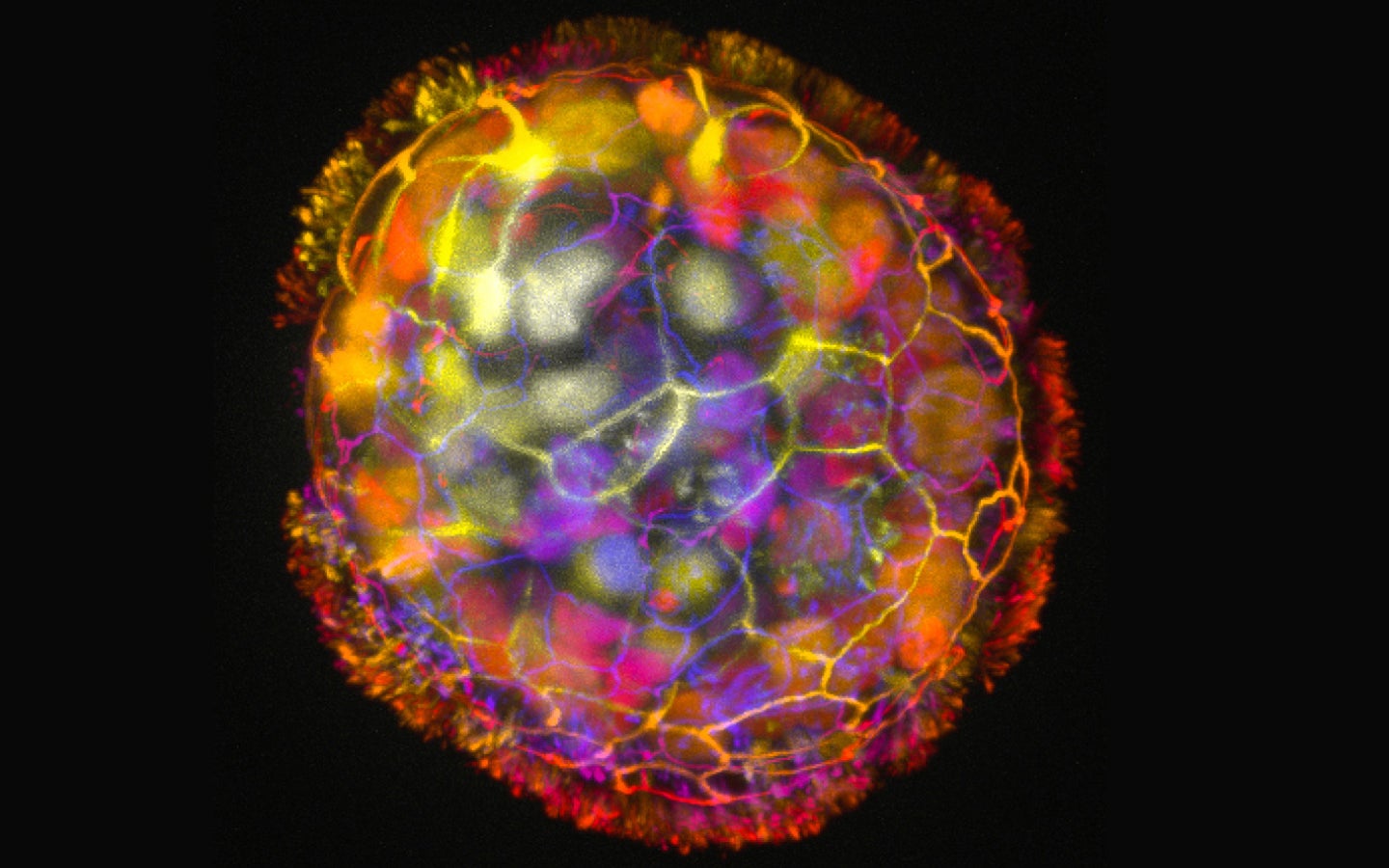
Xenobots—a new classification of robots built from biological cells—evolved from theory to reality in only a few short years. Not long after first proposing the concept, researchers successfully harvested material from frog embryos to create their first multicellular biobots in 2020. From the outset, their xenobots could move, record data, collect materials, heal themselves, and even replicate for a few generations before naturally decomposing.
[Related: Meet xenobots, tiny machines made out of living parts.]
Unlike the typical image of a robot built with electronics and other metal components, bioorganic robots often combine genetically altered or guided cells into a form that does not naturally occur within their source bodies. At first, the team didn’t know if they would be able to adapt their methods for any species other than their amphibian-derived xenobots. The answer to their question is already here: researchers have now advanced to “anthrobots”—biological machines derived from human tracheal cells.
As detailed in a new study published Thursday in Advanced Science, anthrobots not only can be constructed from adult human cells without the need for any genetic modification, but they are already proving more medically promising than their xenobot forebears.
“We wanted to probe what cells can do besides create default features in the body,” PhD candidate and study co-author Gizem Gumuskaya explained in a November 30 announcement. “By reprogramming interactions between cells, new multicellular structures can be created, analogous to the way stone and brick can be arranged into different structural elements like walls, archways, or columns.”
[Related: Robots built from frog cells have unlocked the ability to self-replicate.]
According to the November 30 announcement, shaping xenobots required the laborious use of tweezers and scalpels. Anthrobots, by contrast, are able to self-assemble in lab dish environments, and are sourced from adults instead of embryonic cells.
The anthrobots each started as a single, donated tracheal cells covered in armlike cilia responsible for sweeping particles from lung airways. Researchers engineered cellular growth in a lab setting, which in previous studies has been shown to randomly result in the creation of spherical structures known as organoids. These organoids were then carefully conditioned to form exterior-facing cilia to function as paddles for movement. Using variants of tracheal cells offered an array of anthrobot abilities, such as being able to help build additional engineered tissues. Combining multiple organoids into a single structure created large clusters dubbed “superbots” by the researchers.
But of all an anthrobot’s features, its most promising is one that took its engineers by surprise. When passing over a layer of additional human neurons grown within the lab petri dish, the anthrobots scratched their surfaces and encouraged new growth.
“It is fascinating and completely unexpected that normal patient tracheal cells, without modifying their DNA, can move on their own and encourage neuron growth across a region of damage,” said study co-author Michael Levin, a Tufts University professor of biology who previously helped design xenobots, in Thursday’s announcement. “We’re now looking at how the healing mechanism works, and asking what else these constructs can do.”
As researchers gain a better understanding of their anthrobots’ functions and potential, the team believes the bio-machines could be deployed across a wide range of scenarios. A swarm of anthrobots could hypothetically repair spinal or retinal nerve damage, identify cancerous cell growths, or apply drugs to specific areas of the body.
The post Meet ‘anthrobots,’ tiny bio-machines built from human tracheal cells appeared first on Popular Science.
Articles may contain affiliate links which enable us to share in the revenue of any purchases made.
from | Popular Science https://ift.tt/eWC5d4Y




0 Comments